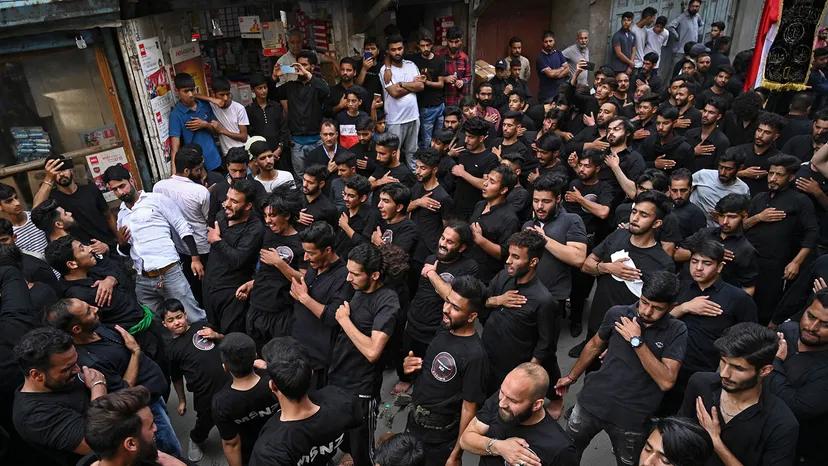In the month of Muharram, black becomes the defining colour of devotion, grief, and protest. It drapes the bodies of mourners, the walls of imam bargahs, the flags of processions, and the banners that are put through city streets. But this use of black is not only symbolic, it is political, spiritual, historical, and deeply emotional.
Black, traditionally associated with sorrow, finds its most profound meaning during the first ten days of Muharram, connecting to the day of Ashura, the day Imam Hussain (A.S), the grandson of the Prophet Muhammad (PBUH), was brutally martyred at the Battle of Karbala. For millions of Shias and many Sunnis around the world, wearing black during Muharram is an act of mourning. But mourning in Islam is not passive. It is a powerful act of remembrance and resistance.
To wear black in Muharram is to align oneself with the message of Karbala: a stand against tyranny, injustice, and oppression. Imam Hussain and his 72 companions were not defeated by the sword of Yazid, they achieved a moral victory that continues to inspire oppressed peoples across the world. So, when mourners wear black, they are not just remembering the dead, they are honouring the values they died for: truth, justice, and resistance in the face of evil. In Pakistan, this symbolism takes on an even more urgent tone. Shia communities, despite contributing richly to the cultural and political fabric of the country, have faced decades of discrimination, violence, and sectarian attacks. Majalis have been bombed, processions targeted, and mourners threatened. Yet every year, they emerge in black, unafraid, unfazed. The colour becomes an act of defiance. It is not just about grief; it is about survival. It is about saying, we will not be erased.
But black also has a spiritual function. It sets the tone for self-awareness and humility. It removes distractions. In Muharram, black strips away luxury and equalises the community, rich and poor, young and old, urban and rural. All stand shoulder to shoulder in grief, united by their shared sorrow for the tragedy of Karbala. In an increasingly visual and image-obsessed world, where colours are used to sell everything from nationalism to products, the simplicity and starkness of black becomes almost radical. For the youth especially, black in Muharram connects them to a legacy of struggle and moral clarity. In a time of social media noise, political confusion, and spiritual fatigue, the black clothes of Muharram remind them that history matters, that values matter, and that resistance is sacred.
Ultimately, black in Muharram is not just a colour, it is a language. A language that speaks of pain, sacrifice, and eternal resistance. It is a silent sermon, preached not from imams or leaders but from the streets, the imam bargahs, and the hearts of those who refuse to forget.
Opinion Piece by Muhammad Jawad Rasool

